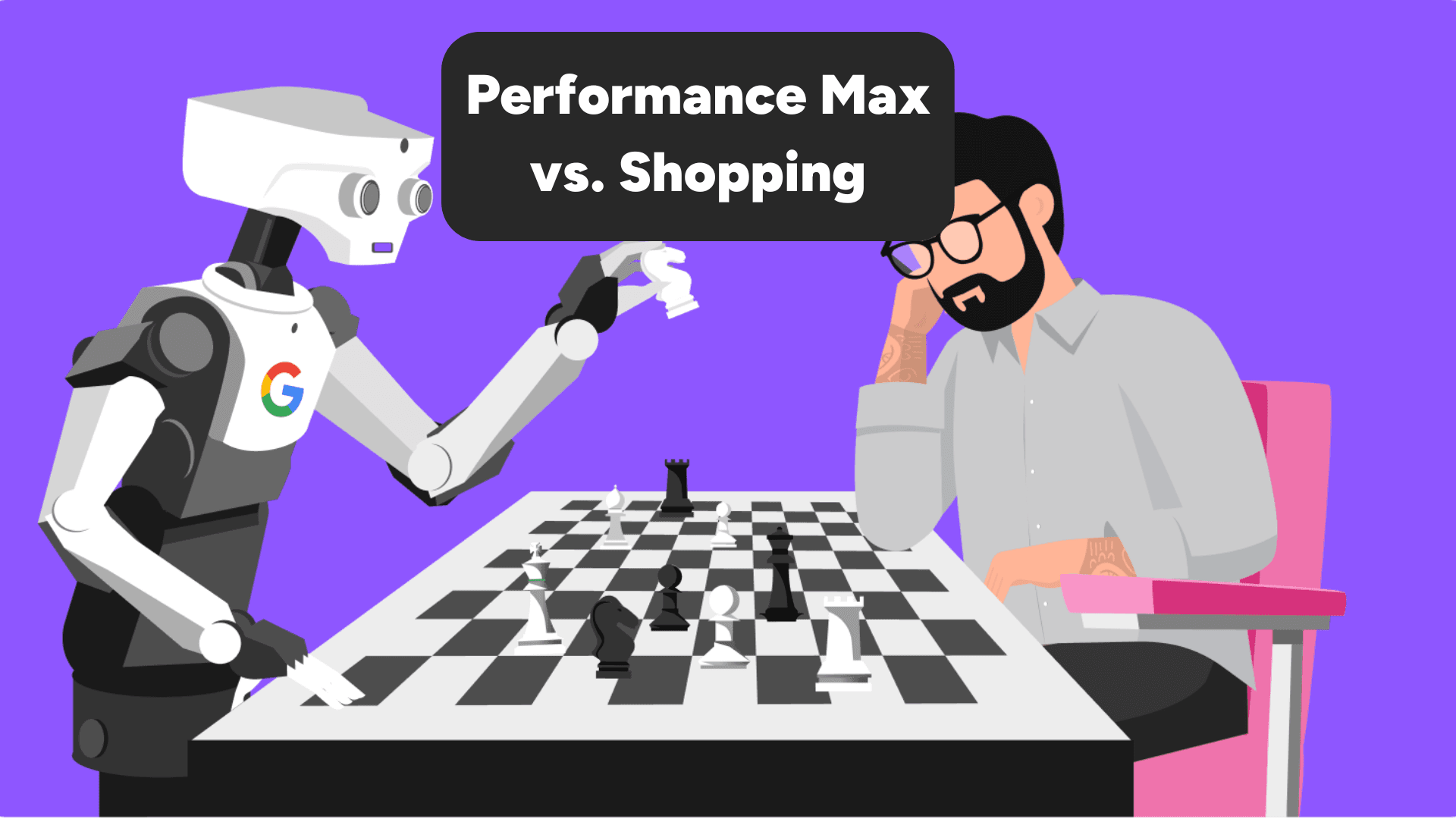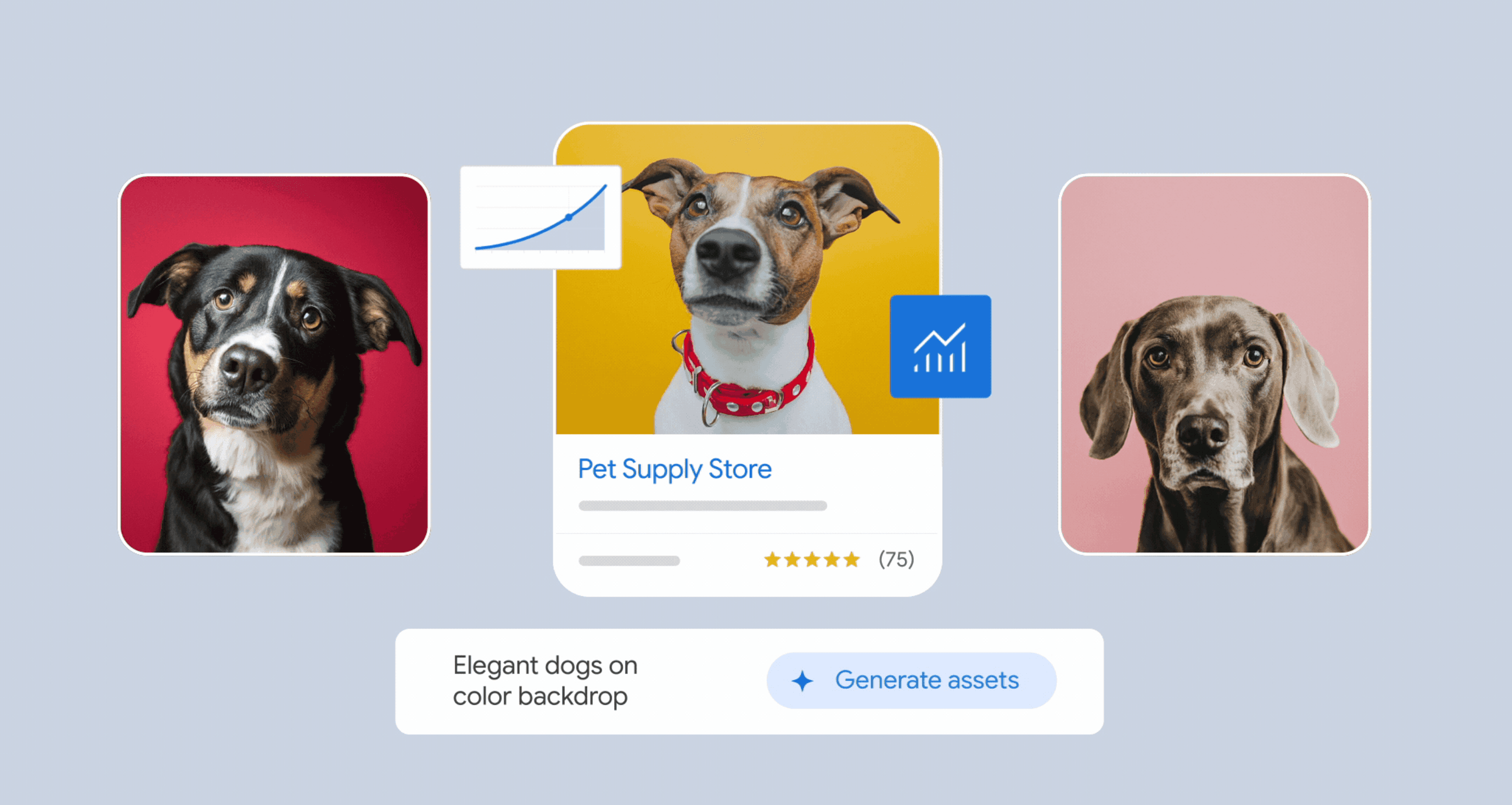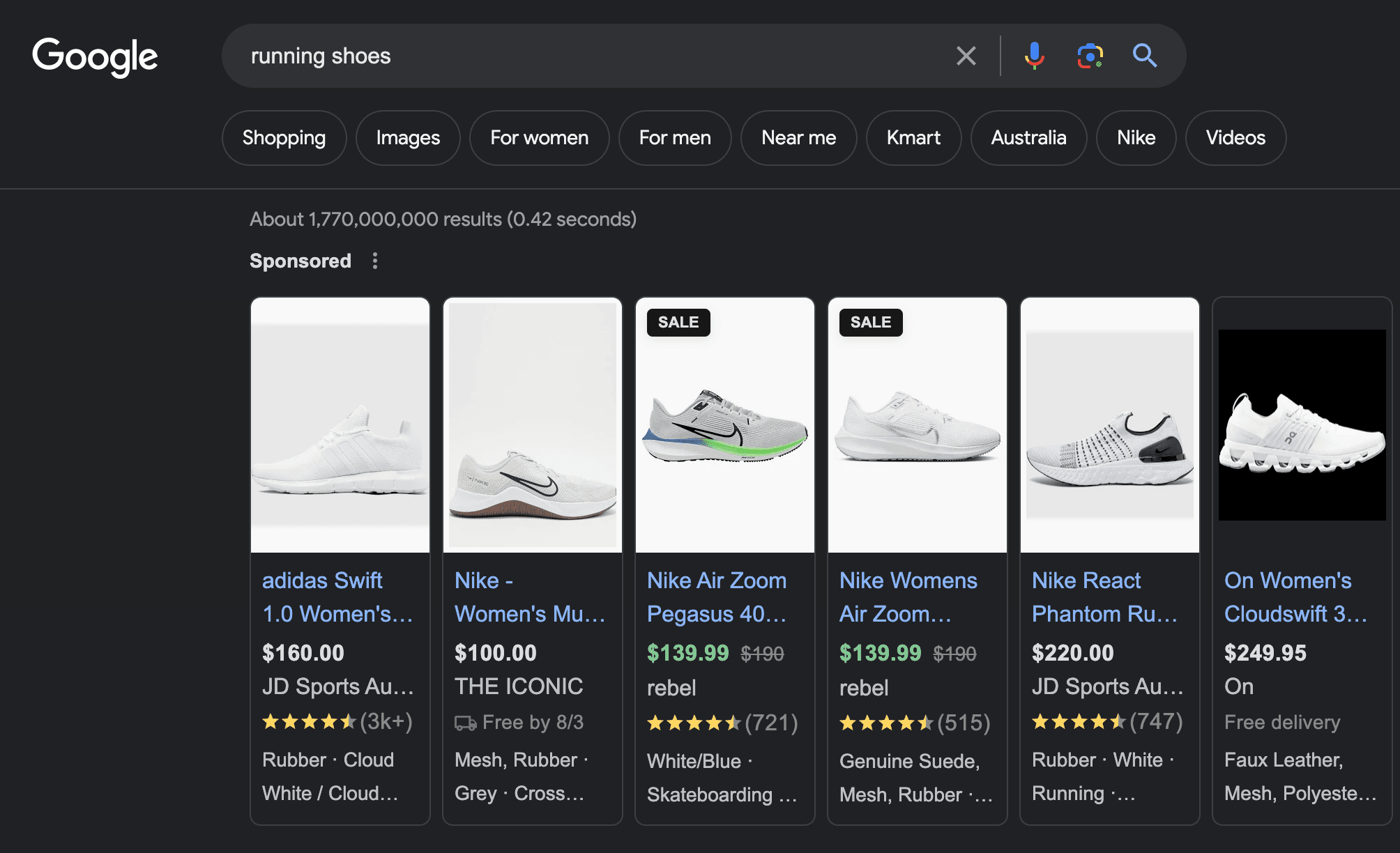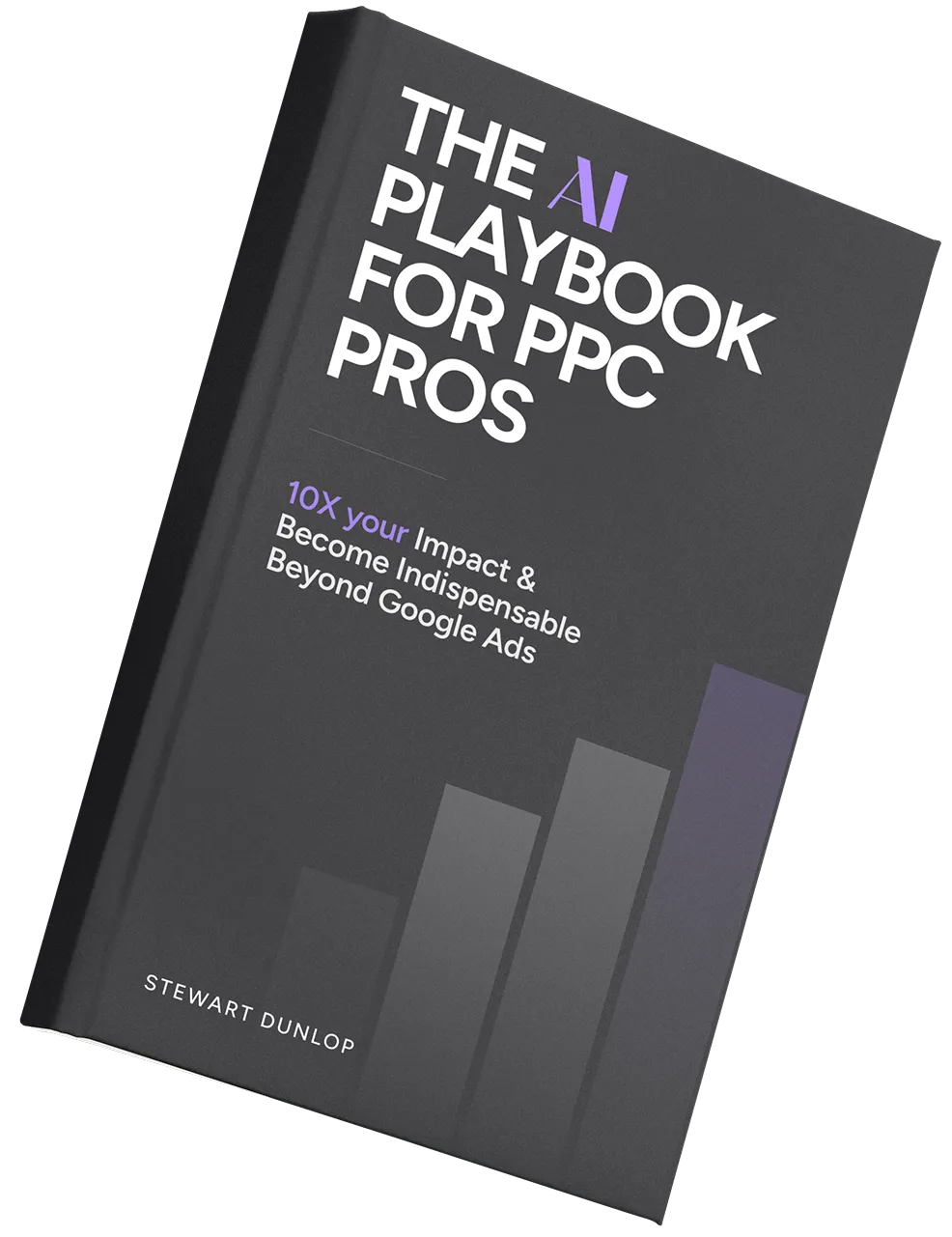
Many people are still confused about the differences between performance max vs standard shopping vs smart shopping campaigns.
This article will clearly tell you the differences, and benefits to each campaign type
What's The Difference?
- Performance Max - New type of AI-driven campaign that not only advertises your products on the Google shopping tab, but also across the entire Google network (YouTube, Gmail, Display, Search etc.) - Budget is shared across entire inventory.
- Standard Shopping - Displays your ads ONLY on the standard shopping carousel that is visible within Google search, and on the Google shopping tab. So you won't get your ads shown across other Google properties like YouTube, display etc.
- Smart Shopping (now retired) - An old campaign type that was entirely replaced by 2023. It also used AI and smart bidding, however budget allocation was more granular.
Smart Shopping No Longer Exists
Smart Shopping no longer exists as of September 2023.
It has been replaced completely now by Performance Max.
However, standard shopping campaigns still exist within the Google Ads Platform.
From Google's official website - "All existing vehicle ads Smart Shopping campaigns will be upgraded to Performance Max by September 2023, bringing you additional inventory and formats to reach new customers."
However, standard shopping does still very much exist!
But first, let's talk about performance max...
Performance Max Overview

PMax is a fully automated campaign type that uses Google's machine learning and AI capabilities to drive conversions across all Google platforms like YouTube, Search, Display, Gmail, Maps etc.
The Basics:
- How it Works: PMax optimizes bids and placements in real time using smart bidding. It considers literally hundreds of factors like specific information about the audience, time of day, previous search history, budget optimization etc. It's goal is to show the right advert to the right person in order to drive more conversions.
- Key Inputs for Performance Max: To get it working well, you need to focus on conversions or conversion value, setting target CPA or ROAS along with location and language settings.
- Asset Management: PMax allows for automatic asset creation based on inputs, but advertisers should review settings like automated text assets and final URL to maintain control.
- Asset Groups Management: Important assets to manage include URLs, images, logos, videos, headlines, descriptions, business name, sitelinks, CTA, and audience signals.
- Benefits of Performance Max: Reach across the entire Google ecosystem, a campaign which is powered by AI and machine learning almost entirely, and automated bidding.
- Ideal Users: PMax is well-suited for businesses with quick sales cycles (like Ecommerce), flexible budgets, and the ability to create a variety of creative assets. Renowned for Ecommerce.
👉 The Key Points
- Performance Max is a prediction engine - It uses AI to predict where the next conversion will come from.
- It's only as good as the data it's given. It needs lots of conversion data to perform.
- Designed to supplement, not replace, search campaigns.
- Again, it uses AI to drive conversions across the platform.
- It's usually terrible with lead gen unless you have incredible conversion tracking and lead qualification in place.
When Performance Max Fails
Performance Max is still a notoriously bad idea for lead-generation type businesses.
This is because it will often drive extremely low quality leads (e.g. form fills) of customers who just aren't a good fit.
For this reason, we usually strongly recommend only using when you can pass specific conversion value data back to Google.
With Ecommerce sites, it isn't such an issue because you'll be automatically feeding Google's system with specific conversion values through Shopify, Woocommerce etc. It's all automated.
How to Succeed With Performance Max

Here's our recommended best practices for Performance Max:
- Implement Great Conversion Tracking: Performance Max heavily relies on conversion tracking for both bidding and targeting automation. Tools like enhanced conversions and offline conversion tracking are incredibly important.
- Include Video Assets: Including at least one video asset is crucial. If no video assets are provided, Google Ads some pretty awful looking ads! You can use something like Canva to create something basic that works.
- Optimize Location Settings: Be cautious with location targeting settings to ensure ads are shown to the intended audience. The "Presence" only setting is often recommended to avoid ads showing to people outside the set locations.
- Use for Conversion Objectives: Performance Max is designed for conversion-based objectives. If used for mid or upper-funnel objectives, advertisers should set conversion actions at the campaign level accordingly.
- Create Audience Signals: This feature lets Google Ads know the type of users the advertiser is interested in targeting. It uses these audience segments as a starting point and then expands to include people likely to convert based on gathered data.
- Check Insights Tab: The Insights tab provides useful information on top-performing search categories and audience segments, which can help in understanding the focus of the campaign and identifying new opportunities.
- Upload a Variety of Creative Assets: PPC automation performs better with a diverse range of text, image, and video assets, as it helps find the right combinations for effective ad delivery.
🧠 Remember - Google's AI can only work with what you give it! If you feed it bad assets (images, videos, text) and bad conversion data, it's not going to work.
One of the very cool new features with performance max is that you can actually use Google's generative AI tools to create your own assets now like images, videos etc. This is only going to get better over time.
Standard Shopping Overview

This campaign type is far more simple to understand.
If you run a standard shopping campaign, here is where your adverts can show:
- The Shopping tab
- Google Search, next to search results (separate from text ads)
- Google Search Partner websites (if your campaign is set to include search partners)
- Maps (via Local Inventory Ads)
But really, it's all about the shopping tab + Google search.
When people type in keywords that are clearly looking for products, your product will show up.
👉 We're one of the World's leading Google shopping agencies, and we think the platform is the best way for Ecommerce brands to scale fast.
Performance Max vs Standards Shopping - Key Differences
Let's dive into the key differences.
🤖 Automation: Performance Max is completely automated with AI 🤖 Whereas standard shopping campaigns have a lot more control.
🧠 Learning Phase: Since P-Max is driven by machine learning, it can take > 6 weeks to get through the learning phase and start delivering reasonable results.
🔑 Keyword Targeting: You cannot target keywords with Perfomance Max! It's completely automated campaign type so will go after broad match and base everything off the product feeds and assets you give it.
🎯 Platforms: Performance Max pushes adverts across all of Google's platforms; Standard Shopping focuses on product sales on Google Shopping and search results.
🎨 Creatives: Performance Max uses provided assets for varied ads (videos, images, text etc.) whereas Standard Shopping uses fixed product listings from the Merchant Center feed.
💰 Budget Allocation: Performance Max automatically distributes the budget across platforms to gain the best results; Standard Shopping allows for specific budget allocation to products or categories.
📺 Ad Formats: Performance Max creates multiple ad formats from provided assets; Standard Shopping uses standard product listing ads.
Performance Max Gets Priority
Important Notes:
- Overlapping Campaigns: Performance Max takes priority over Standard Shopping. If a product is in both campaign types, Performance Max will generally get most of the impressions.
- Experimentation: The best way to discover which campaign type works best for your specific products and goals is through careful testing and experimentation.
When is Performance Max Better?
- When You Need Budget Management: With smaller budgets, you might With dedicated budgets for specific product groups, Standard Shopping facilitates better budget allocation across your product catalog.
- When Your Data isn't Great: You should never use Performance Max if you're a small operation without lots of conversion data, and therefore standard shopping would be preferential.
- When You Want Precise Control: Standard Shopping gives you more granular control over campaign targeting, bidding, and ad placement. This is essential when you need to refine your approach for maximum efficiency.
- Product-Level Optimization: Standard Shopping allows you to optimize campaigns for specific products or product groups, giving you flexibility to tailor strategies based on performance.
- Transparency: Standard Shopping offers more visibility into where your ads are showing and how they're performing. This data is valuable for ongoing PPC optimization.
👉 Our Verdict: Overall, we recommend that smaller brands with limited budgets stick to standard shopping campaigns.
When is Standard Shopping Better?
- When You Need Budget Management: With smaller budgets, you might With dedicated budgets for specific product groups, Standard Shopping facilitates better budget allocation across your product catalog.
- When Your Data isn't Great: You should never use Performance Max if you're a small operation without lots of conversion data, and therefore standard shopping would be preferential.
- When You Want Precise Control: Standard Shopping gives you more granular control over campaign targeting, bidding, and ad placement. This is essential when you need to refine your approach for maximum efficiency.
- Product-Level Optimization: Standard Shopping allows you to optimize campaigns for specific products or product groups, giving you flexibility to tailor strategies based on performance.
- Transparency: Standard Shopping offers more visibility into where your ads are showing and how they're performing. This data is valuable for ongoing optimization.
👉 Our Verdict: Overall, we recommend that smaller brands with limited budgets stick to standard shopping campaigns.
In a Nutshell 🥜
Essentially, performance max is great for larger Google ads accounts with a high spend requirement and ambitious goals.
This is simply because they probably won’t be able to hit their spend requirement on standard shopping or search ads.
But be very careful with smaller brands, as it might just gobble up spend on branded keywords / retargeting to find easy conversions.
Real Life Examples
Shopping Campaigns
For products like artisan cheeses that have visual appeal and might attract buyers based on appearance and specific searches, use Shopping campaigns. Shopping ads would be particularly effective for visually-driven purchases and when users already have a specific product in mind. Each product listing can include high-quality images, prices, and a short description, making it easy for connoisseurs to find and purchase these rare items.
Performance Max
Given the niche nature of the products, Performance Max campaigns can help by reaching potential customers across all Google platforms, including those not actively searching for these specific items.
Imagine targeting people who you know love rare and extravagant foods, but perhaps wouldn't necessarily search for it on Google.
By using audience signals like interests in gourmet cooking, international cuisines, or culinary arts, Performance Max can introduce these specialty foods to a wider audience likely to be interested, even if they haven't directly searched for them. This could include targeting users watching cooking shows on YouTube, browsing food blogs, or researching culinary schools.
💡 Interplay:
- Shopping campaigns directly showcase the products to those ready to buy, making it easy to click through to purchase.
- Performance Max expands reach, bringing the products in front of a broader but still targeted audience across Google's networks, increasing brand awareness and attracting new customers who might not have been reached through search alone.
🍷 Rare Wine Company

Shopping Campaigns
For products like rare wines that have visual appeal and might attract buyers based on appearance and specific searches, use standard Shopping campaigns. Shopping ads would be particularly effective for visually-driven purchases and when users already have a specific product in mind. Each product listing can include high-quality images, prices, and a short description, making it easy for connoisseurs to find and purchase the wine.
Performance Max
Given the niche nature of wine, Performance Max campaigns can help by reaching potential customers across all Google platforms, including those not actively searching for these specific items.
Imagine targeting people who you know love rare and extravagant foods, or just love winer in general but perhaps wouldn't necessarily search for it on Google.
By using audience signals like interests in wine tasting, good food etc. Performance Max can introduce your wine to a wider audience likely to be interested, even if they haven't directly searched for them. This could include targeting users watching cooking shows on YouTube, browsing wine blogs, or researching wineries.
💡 Interplay:
- Shopping campaigns directly showcase the products to those ready to buy, making it easy to click through to purchase.
- Performance Max expands reach, bringing the products in front of a broader but still targeted audience across Google's networks, increasing brand awareness and attracting new customers who might not have been reached through search alone.
🎵 Musical Instruments Store
Shopping Campaigns
Again, we would showcase the individual instruments through Shopping campaigns, providing clear images, prices, and specific details about the customization options. This approach works well for higher-priced items where buyers are likely to research extensively before purchasing. It allows the store owner to highlight a variety of instruments, craftsmanship and really double down on imagery to help convert customers.
Performance Max
We would use Performance Max to reach potential buyers across Google's platforms who have shown interest in music, instrument making, or cultural heritage but might not be actively searching for instruments just yet.
Targeting could leverage signals like participation in folk music forums, watching videos about learning an instrument or searching about learning an instrument as an adult.
Interplay:
- Shopping campaigns allow potential buyers to see and fall in love with the instruments, driving direct sales from those already interested in purchasing.
- Performance Max campaigns broaden the discovery of these niche instruments by tapping into a wider audience of music enthusiasts, raising awareness to a new untapped audience.

